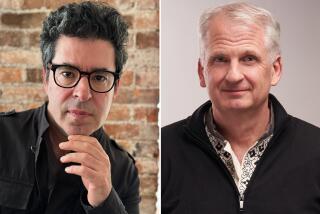NONFICTION : DEMOCRACY IN THE STREETS: FROM PORT HURON TO THE SIEGE OF CHICAGO by James Miller (Simon & Schuster: $19.95; 416 pp.).
When a small group of socially conscious students looked toward their future in the early 1960s they came face to face with a great paradox of American history. There were monumental issues of war and race and poverty, but the political culture was self-satisfied and conservative and there was no organized critical Left. There were no socialist organizations or radical leaders to turn to for inspiration. The revelations of Stalinist atrocities and the McCarthy blacklists had created a wasteland. The building of a new American Left was in the hands of 20-year-olds.
This is the starting point for James Miller’s intellectual history of the New Left. It is the story of a young, precocious intellectual named Tom Hayden and a handful of idealists who gathered at Port Huron, Mich., in the summer of 1962 to create a remarkable manifesto that came to be known as the Port Huron Statement. It is the story of their decade-long effort to breathe life into the myth of American democracy, to create a “participatory democracy,” and make it the cornerstone of a new organization, the Students for a Democratic Society. Miller has written other books on political philosophy, but this one is special; a way to reflect on his own youthful radicalism. No dispassionate scholar here. He admires the students, wants them to succeed and you get the feeling he wishes the story had a different ending.
It is to his credit that he chokes down an honest if disappointing conclusion: The young radicals, betrayed by inexperience, were their own worst enemies. Despite their passion, the challenge of building an independent Left rooted in the ideal of participatory democracy eluded them, overwhelmed them and finally destroyed them. Miller is not the first writer to tackle this subject. Some journalistic accounts written at the time are more emotionally intense, and much has been written about SDS as an organization. But by building his story around the struggle to write the Port Huron Statement and then live up to its expectations he has made an important new contribution. And as an appendix he has had the good sense to give us the manifesto itself in its entirety to be picked over by a new generation of students “looking uneasily at the world they inherit.”
More to Read
Sign up for our Book Club newsletter
Get the latest news, events and more from the Los Angeles Times Book Club, and help us get L.A. reading and talking.
You may occasionally receive promotional content from the Los Angeles Times.








